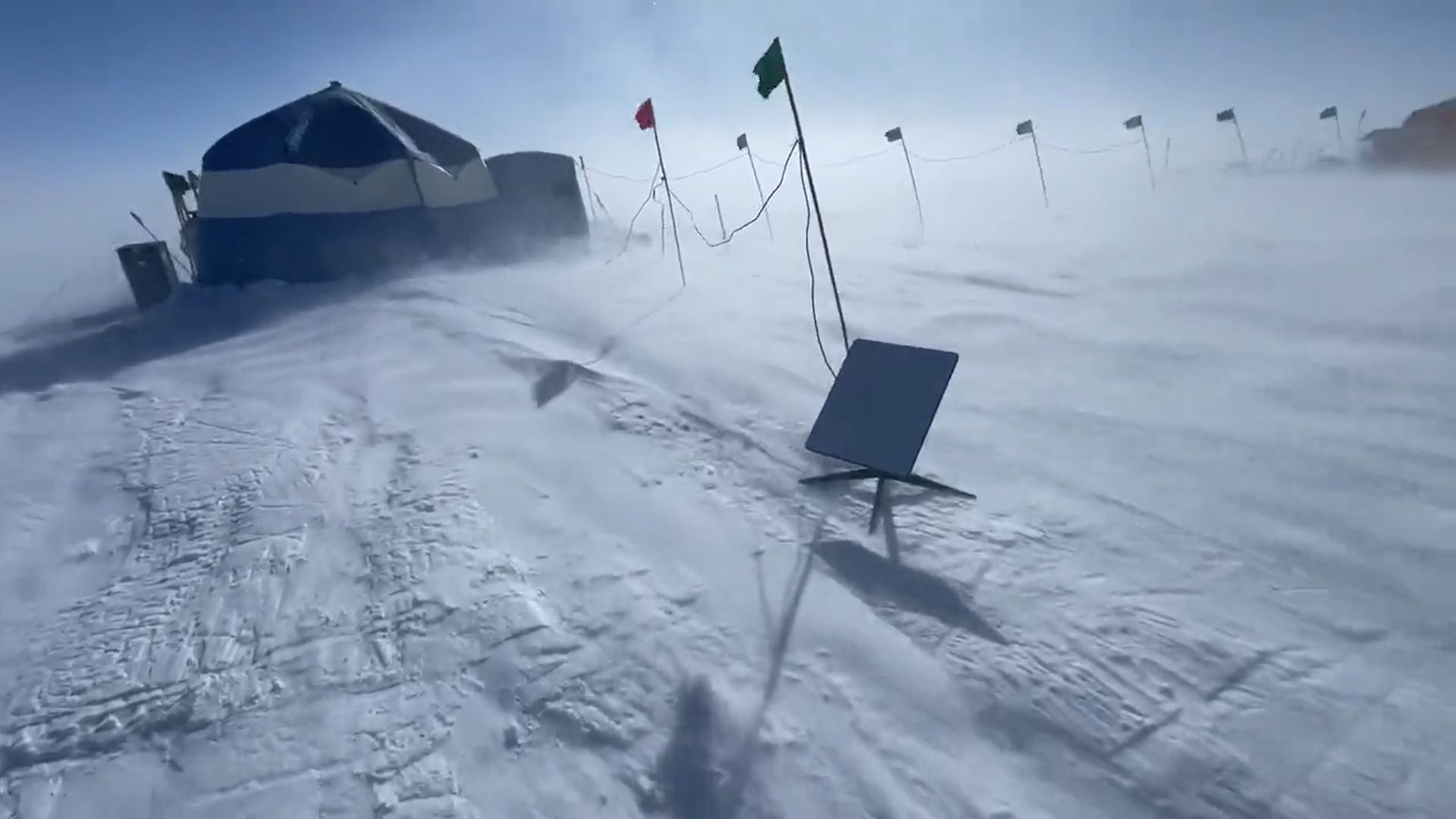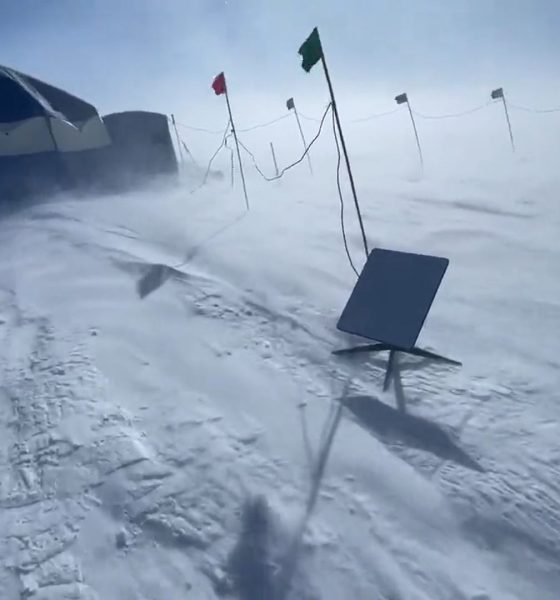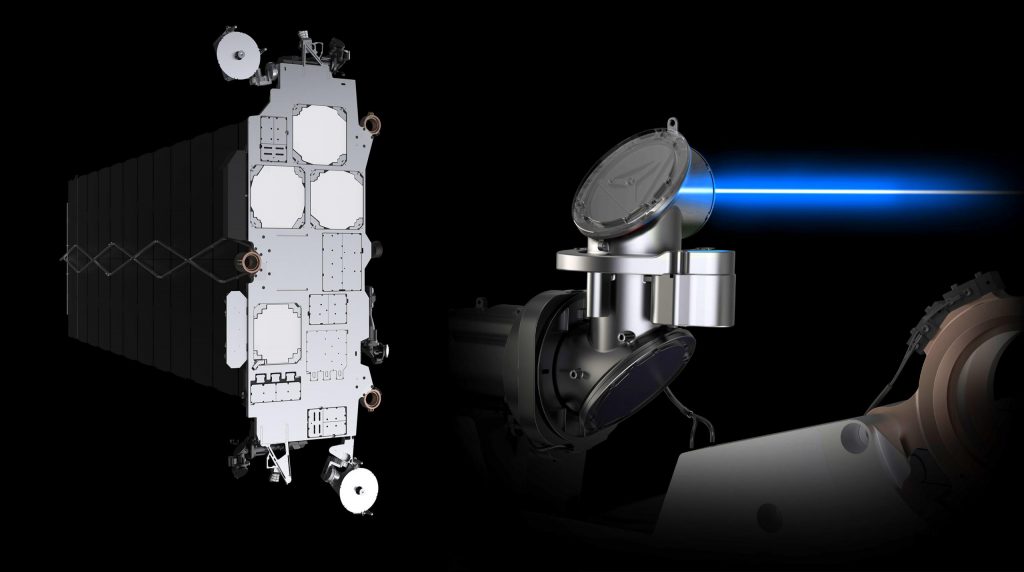

News
SpaceX Starlink satellite internet tested in the field in Antarctica
SpaceX’s Starlink internet continues to find success in Antarctica, Earth’s icy southernmost continent and has spread beyond McMurdo Station.
The company first reported that Starlink reached Antarctica as part of a National Science Foundation experiment in September 2022. The milestone also marked the satellite internet network’s arrival on all seven continents.
The update that's rolling out to the fleet makes full use of the front and rear steering travel to minimize turning circle. In this case a reduction of 1.6 feet just over the air— Wes (@wmorrill3) April 16, 2024
A series of lasers
Just ~5% of the almost 3400 working Starlink satellites currently in orbit make coverage of Antarctica (and the Arctic) possible. SpaceX currently has 181 polar-orbiting satellites in operational orbits, likely providing a decent amount of coverage in polar regions. But that’s only a third of the 520 polar satellites SpaceX’s Starlink Gen1 constellation will have once complete, meaning that coverage is likely intermittent for the time being.
Those polar satellites must also use optical interlinks (lasers) to connect Antarctic users to ground stations hundreds or thousands of miles away, as the vast and sparsely populated continent has no Starlink ground stations. Instead, users are connected to the internet via space lasers that route their communications to and from ground stations in South America, Australia, New Zealand, and other nearby locales.

Studying the oldest ice on Earth
The general purpose of the Center for Oldest Ice Exploration (COLDEX) field experiment Starlink is aiding is to find the oldest ice on Earth. That old ice allows scientists to peer back tens of thousands, hundreds of thousands, or even millions of years back into Earth’s past. Most importantly for the modern era, that ice can contain shockingly detailed information about the history of Earth’s climate.
Researchers like Dr. Neff collect ice cores by drilling miles into Antarctic ice sheets. Once removed, packaged, and carefully shipped by plane to labs around the world, the data extracted from those ice cores can tell researchers how the Earth has responded in the past to major and minor changes in climate. Knowing how it has responded and behaved before has helped scientists around the world determine with near certainty that human greenhouse gas emissions are causing average global temperatures to increase at a relatively rapid pace. Further studies, like those being done now, may help specify what kind of changes we can expect as climates warm; allowing cities, countries, and humanity as a whole to prepare for the worst while (hopefully) trying to prevent those outcomes.
COLDEX began testing Starlink in the field in early December 2022. It’s not entirely clear if that testing is still ongoing, but Dr. Peter Neff appears to be optimistic either way. In a January 21st tweet, the assistant professor and field research director said that he was excited “to see how [Starlink] & other modes of high-speed connectivity can advance [science] communication [and]…alter how we do science on the ice.”
Finding a balance
The National Science Foundation has been a part of both Antarctic Starlink experiments, thus far, and finds itself in a unique position. Through funding and other means, the government agency is aiding efforts to test the limits of the SpaceX network and discover how it can benefit science (and improve life) in some of the harshest environments on Earth. Simultaneously, NSF holds a sort of supervisory role over other aspects of SpaceX’s Starlink constellation.
For the most part, that relationship is on an even keel and SpaceX has been highly forthcoming and happy to cooperate. Even without any explicit legal requirement, SpaceX has made wide-reaching changes to its satellites and continues to experiment with ways to reduce their brightness to ground observers and limit their impact on astronomy. Nonetheless, the FCC’s decision to tie SpaceX’s next-generation Starlink Gen2 constellation license with its cooperation with the NSF has given the latter agency a bit more regulatory power than it had before.
That arguably makes the involvement of the NSF (or NSF-funded researchers) in testing Starlink’s ability to benefit science even more important. Knowing firsthand how impactful the ability to access high-bandwidth internet can be in the field and at remote camps, the NSF should be better suited to make the kind of cost-benefit analyses required to determine how much of an impact (on the night sky and astronomy) is acceptable relative to the benefits Starlink can provide.

Elon Musk
Starlink passes 9 million active customers just weeks after hitting 8 million
The milestone highlights the accelerating growth of Starlink, which has now been adding over 20,000 new users per day.

SpaceX’s Starlink satellite internet service has continued its rapid global expansion, surpassing 9 million active customers just weeks after crossing the 8 million mark.
The milestone highlights the accelerating growth of Starlink, which has now been adding over 20,000 new users per day.
9 million customers
In a post on X, SpaceX stated that Starlink now serves over 9 million active users across 155 countries, territories, and markets. The company reached 8 million customers in early November, meaning it added roughly 1 million subscribers in under seven weeks, or about 21,275 new users on average per day.
“Starlink is connecting more than 9M active customers with high-speed internet across 155 countries, territories, and many other markets,” Starlink wrote in a post on its official X account. SpaceX President Gwynne Shotwell also celebrated the milestone on X. “A huge thank you to all of our customers and congrats to the Starlink team for such an incredible product,” she wrote.
That growth rate reflects both rising demand for broadband in underserved regions and Starlink’s expanding satellite constellation, which now includes more than 9,000 low-Earth-orbit satellites designed to deliver high-speed, low-latency internet worldwide.
Starlink’s momentum
Starlink’s momentum has been building up. SpaceX reported 4.6 million Starlink customers in December 2024, followed by 7 million by August 2025, and 8 million customers in November. Independent data also suggests Starlink usage is rising sharply, with Cloudflare reporting that global web traffic from Starlink users more than doubled in 2025, as noted in an Insider report.
Starlink’s momentum is increasingly tied to SpaceX’s broader financial outlook. Elon Musk has said the satellite network is “by far” the company’s largest revenue driver, and reports suggest SpaceX may be positioning itself for an initial public offering as soon as next year, with valuations estimated as high as $1.5 trillion. Musk has also suggested in the past that Starlink could have its own IPO in the future.
News
NVIDIA Director of Robotics: Tesla FSD v14 is the first AI to pass the “Physical Turing Test”
After testing FSD v14, Fan stated that his experience with FSD felt magical at first, but it soon started to feel like a routine.

NVIDIA Director of Robotics Jim Fan has praised Tesla’s Full Self-Driving (Supervised) v14 as the first AI to pass what he described as a “Physical Turing Test.”
After testing FSD v14, Fan stated that his experience with FSD felt magical at first, but it soon started to feel like a routine. And just like smartphones today, removing it now would “actively hurt.”
Jim Fan’s hands-on FSD v14 impressions
Fan, a leading researcher in embodied AI who is currently solving Physical AI at NVIDIA and spearheading the company’s Project GR00T initiative, noted that he actually was late to the Tesla game. He was, however, one of the first to try out FSD v14.
“I was very late to own a Tesla but among the earliest to try out FSD v14. It’s perhaps the first time I experience an AI that passes the Physical Turing Test: after a long day at work, you press a button, lay back, and couldn’t tell if a neural net or a human drove you home,” Fan wrote in a post on X.
Fan added: “Despite knowing exactly how robot learning works, I still find it magical watching the steering wheel turn by itself. First it feels surreal, next it becomes routine. Then, like the smartphone, taking it away actively hurts. This is how humanity gets rewired and glued to god-like technologies.”
The Physical Turing Test
The original Turing Test was conceived by Alan Turing in 1950, and it was aimed at determining if a machine could exhibit behavior that is equivalent to or indistinguishable from a human. By focusing on text-based conversations, the original Turing Test set a high bar for natural language processing and machine learning.
This test has been passed by today’s large language models. However, the capability to converse in a humanlike manner is a completely different challenge from performing real-world problem-solving or physical interactions. Thus, Fan introduced the Physical Turing Test, which challenges AI systems to demonstrate intelligence through physical actions.
Based on Fan’s comments, Tesla has demonstrated these intelligent physical actions with FSD v14. Elon Musk agreed with the NVIDIA executive, stating in a post on X that with FSD v14, “you can sense the sentience maturing.” Musk also praised Tesla AI, calling it the best “real-world AI” today.
News
Tesla AI team burns the Christmas midnight oil by releasing FSD v14.2.2.1
The update was released just a day after FSD v14.2.2 started rolling out to customers.

Tesla is burning the midnight oil this Christmas, with the Tesla AI team quietly rolling out Full Self-Driving (Supervised) v14.2.2.1 just a day after FSD v14.2.2 started rolling out to customers.
Tesla owner shares insights on FSD v14.2.2.1
Longtime Tesla owner and FSD tester @BLKMDL3 shared some insights following several drives with FSD v14.2.2.1 in rainy Los Angeles conditions with standing water and faded lane lines. He reported zero steering hesitation or stutter, confident lane changes, and maneuvers executed with precision that evoked the performance of Tesla’s driverless Robotaxis in Austin.
Parking performance impressed, with most spots nailed perfectly, including tight, sharp turns, in single attempts without shaky steering. One minor offset happened only due to another vehicle that was parked over the line, which FSD accommodated by a few extra inches. In rain that typically erases road markings, FSD visualized lanes and turn lines better than humans, positioning itself flawlessly when entering new streets as well.
“Took it up a dark, wet, and twisty canyon road up and down the hill tonight and it went very well as to be expected. Stayed centered in the lane, kept speed well and gives a confidence inspiring steering feel where it handles these curvy roads better than the majority of human drivers,” the Tesla owner wrote in a post on X.
Tesla’s FSD v14.2.2 update
Just a day before FSD v14.2.2.1’s release, Tesla rolled out FSD v14.2.2, which was focused on smoother real-world performance, better obstacle awareness, and precise end-of-trip routing. According to the update’s release notes, FSD v14.2.2 upgrades the vision encoder neural network with higher resolution features, enhancing detection of emergency vehicles, road obstacles, and human gestures.
New Arrival Options also allowed users to select preferred drop-off styles, such as Parking Lot, Street, Driveway, Parking Garage, or Curbside, with the navigation pin automatically adjusting to the ideal spot. Other refinements include pulling over for emergency vehicles, real-time vision-based detours for blocked roads, improved gate and debris handling, and Speed Profiles for customized driving styles.








